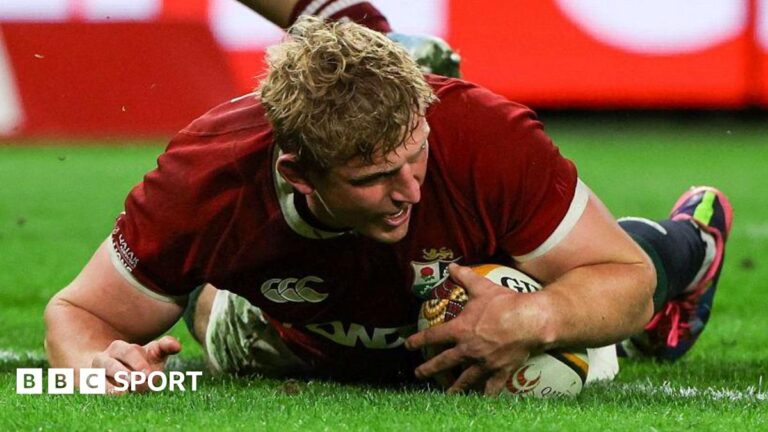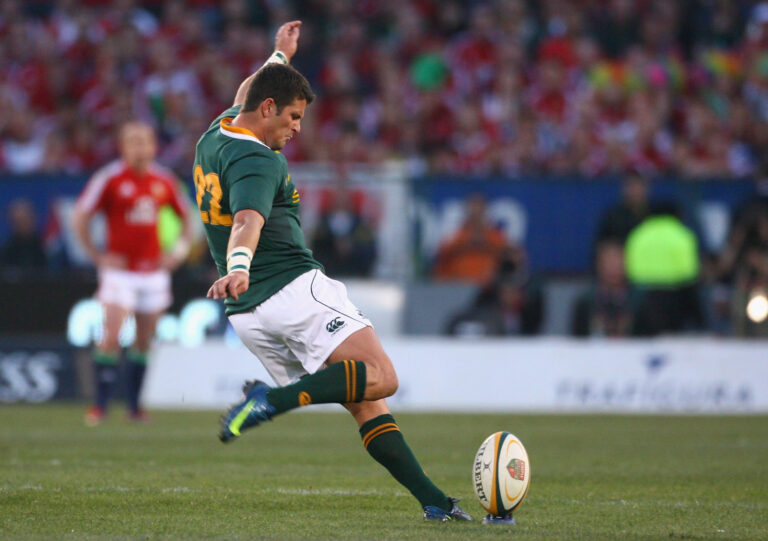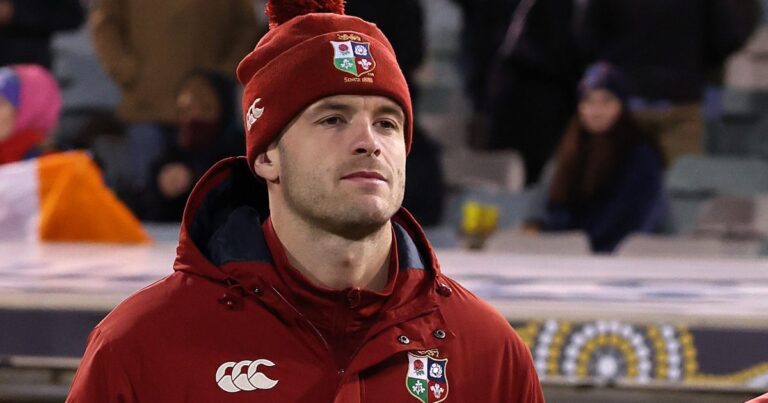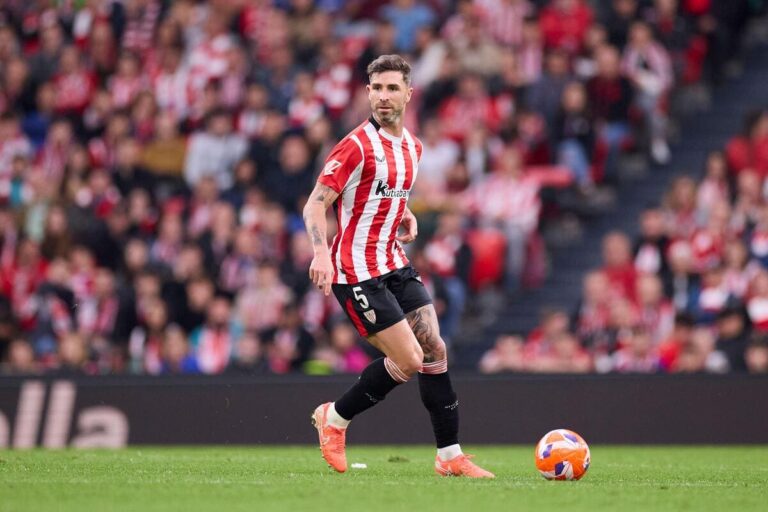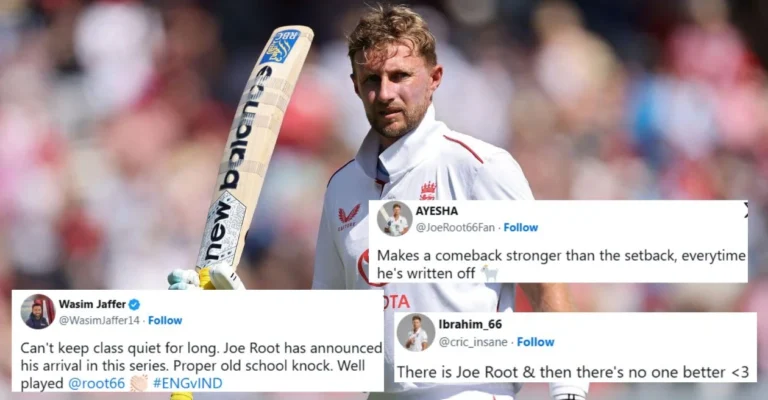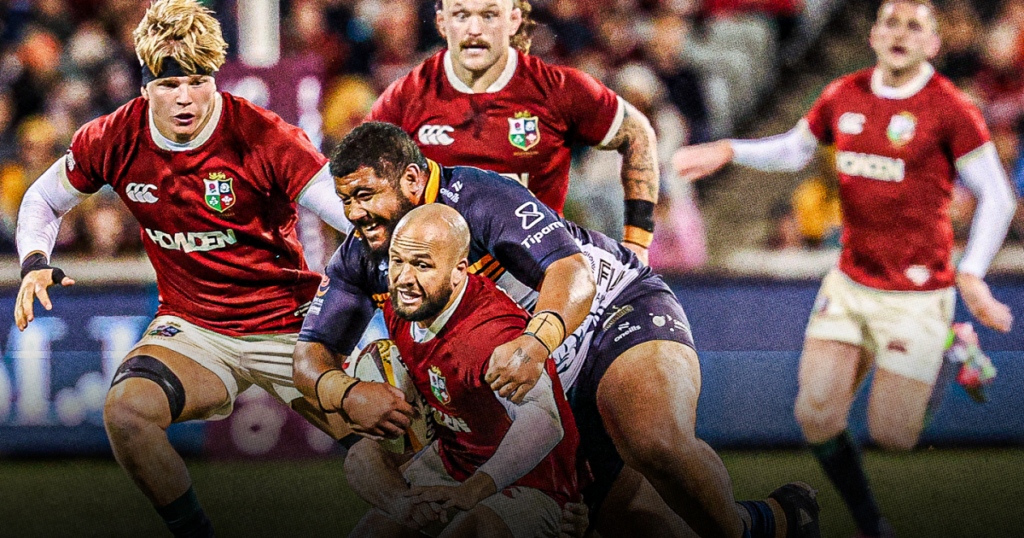
Should you ever need to expose the myth that Australia is a permanently sunburnt country, try spending four days in Canberra during midwinter. As the dust settles on the Lions’ fourth match down under, they can reflect on how the capital city’s icy conditions kept their performance from catching fire.
The Brumbies have traditionally provided the Lions with their stiffest opposition outside of the Tests, with the two previous encounters resulting in one narrow victory apiece. They’ve also proved pivotal junctures, with the Brumbies’ battling performance in 2001 inspiring the Wallabies to level the series a few days later, and their victory in 2013 giving the Lions a much-needed jolt.
On both occasions, the Lions fielded a so-called midweek side. But on the 2025 tour, Saturday is the new midweek and the team that played on Wednesday night looked very much like Andy Farrell’s first choice XV. The expectation was that the Lions’ stuttering progress down under would finally coalesce into a fluid performance to silence the doubters.
While there were flashes of brilliance, the display was some way short of convincing. Time and again, just when you thought the Lions were going to crank through the gears, they’d slow down and trundle along in third. And with Blair Kinghorn limping off in the first half, Andy Farrell has another injury concern to contend with, although the latest bulletin on the Scottish full-back at least suggests he will be able to play some part in the Test series.
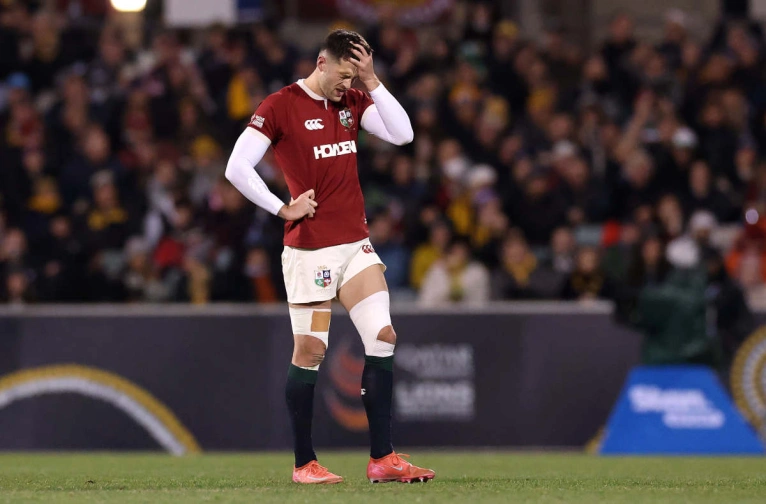
Twelve years ago, the Lions’ match against the Brumbies was the last provincial game before the first Test. At the time, the Brumbies were the best club side, not just in Australia, but the entire Southern Hemisphere, topping the Super 15 standings and enjoying a domestic run that would take them all the way to the final.
Lions head coach Warren Gatland knew they would provide a stern test, but unlike his successor’s tactic of fielding his best side, he adopted a more novel approach.
When the press corps assembled for the team announcement back in 2013, we were expecting a fairly routine affair. The injury list had been lengthening, so we were anticipating a patched-up backline, but when Andy Irvine delivered the line-up in his distinctive Edinburgh brogue, there was a collective murmur of astonishment when he reached the left wing.
“Number 11, Shane Williams”: a man who wasn’t actually in the squad, and who’d retired from international rugby two years earlier. It was his name that dominated the news cycle for the next 24 hours, but he wasn’t the only new recruit. Four of the backline hadn’t even been in the country a week earlier, let alone played a game. Billy Twelvetrees, Christian Wade and Brad Barritt had all been summoned from Argentina for emergency cover. Williams had been plucked from his semi-pro side in Japan.
It was a cynical move that undermined the sacred status of the Lions shirt but was defended by Gatland as being sensible and necessary. The Brumbies took umbrage at the sleight, responding with a fine victory…
Gatland’s rationale was clear. The Brumbies were Australia’s best provincial side, and he didn’t want them taking chunks out of his front-liners. Better to call up some cannon fodder to take the blows on their behalf. It was a cynical move that undermined the sacred status of the Lions shirt but was defended by Gatland as being sensible and necessary. The Brumbies took umbrage at the sleight, responding with a fine victory that resonates to this day.
Canberra itself may be a strange, unlovable city – and the icy winds whipping through its featureless boulevards this week have done little to enhance its charm – but there is a fierce pride attached to its rugby club. In the days leading up to Wednesday’s match, there was a flurry of newspaper articles calling on the class of 2025 to channel the spirit of the 2013 vintage. A plush dinner in one of the city’s finest hotels was arranged to wallow in nostalgia and celebrate the Brumbies’ unique history with the Lions.
It’s something that’s woven into the folklore of the club. Peter Kimlin, the captain in 2013, apparently delivered a fire-and-brimstone speech before the match, encouraging his troops to seize the moment. Its emotional heft was out of character for the usually taciturn back-rower, but it had the desired effect and cemented his legacy as the Brumbies ‘most successful captain’ (statistically at least. Played two, won two).
His fly-half, Matt Toomua, admits to remembering little about the game itself, but recalls several incidental details vividly, including the snow drifts at the side of the road as the bus rolled towards the ground, and the McDonald’s he devoured in bed as realisation dawned that he’d made history.
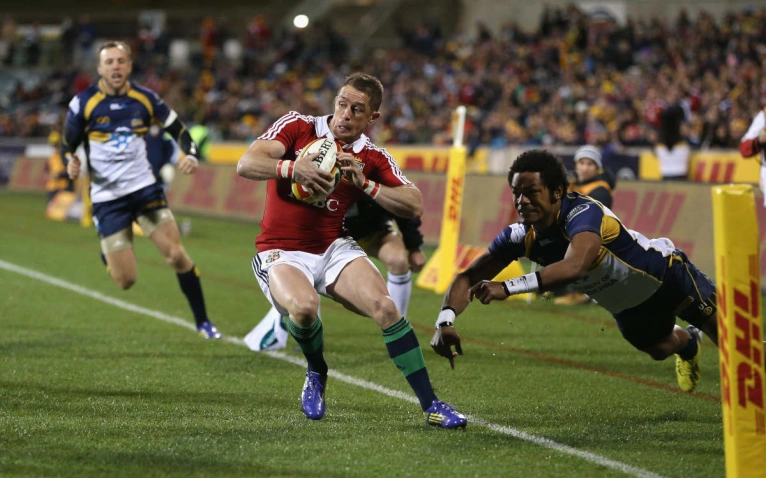
The Lions’ mis-matched selection, and decision to shoehorn their new recruits into the side, proved their undoing. Dropped balls, wayward passes, and knock-ons plagued their performance while some bone-crunching defence from the hosts left them dazed and bewildered.
Head coach Jake White, got his tactics spot on, instructing his charges to flood the breakdown and disrupt the Lions’ flow of ball – something we’ve witnessed several times already on the 2025 tour. Addressing his side in the aftermath, he told them it was the finest achievement of his storied coaching career and urged them to dismiss the outside noise about it being a weakened Lions side. “There’ll be no asterisk next to this game in the history books” he said. “When people look back, all they’ll see is that the Brumbies beat the Lions.”
Twelve years earlier, at the same ground, the Brumbies had been coasting to victory against a Lions squad that had beaten the Wallabies just days before. At 19-3 up and comfortable, it looked as though they were going to strike a considerable blow to the tourists’ morale.
The Lions were victorious, and Healey and Dawson had salvaged their reputations; but they’d had their noses bloodied and ultimately went on to surrender the Test series.
England’s Austin Healey and Matt Dawson had been at the centre of considerable off-field controversy after they’d laid into their own coaches in their newspaper diaries, criticising Graham Henry and his assistants for over-training them and creating a sour atmosphere.
Both were picked to play, and Healey’s perceived arrogance – wagging his finger at his chasing defenders as he ran in for a try – infuriated the Brumbies’ second-row, Justin Harrison, who spent the next 60 minutes trying to rip his head off. Healey wasn’t to know it then, but Harrison would claim the sweetest revenge imaginable in the deciding Test match 11 days later.
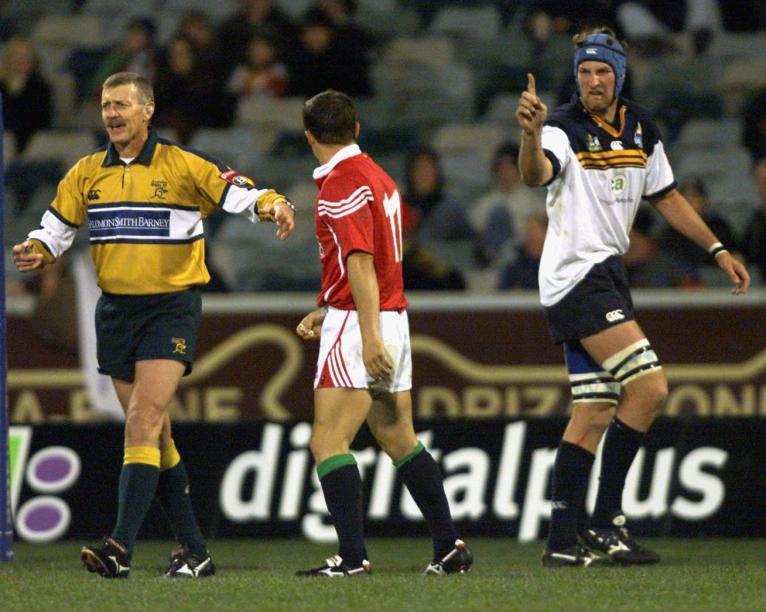
Dawson – whose scathing newspaper column had nearly seen him sent home – converted Healey’s injury-time try to steal victory, sending the Lions supporters into raptures, and Harrison into a fit of rage. Rendered impotent by the presence of the TV cameras, all he could do to was throw his scrum cap rather ineffectually at Healey’s head.
The Lions were victorious, and Healey and Dawson had salvaged their reputations; but they’d had their noses bloodied and ultimately went on to surrender the Test series.
No doubt then, that this fixture has thrown up a couple of tour-defining games, and while the defeat in 2013 gave the Lions a jolt, the hope this time was that Wednesday would provide a launchpad; a chance to put the faltering performance against the Waratahs behind them and enter the business end of the tour with purpose.
Five tries are not to be sniffed at… but their attack continues to falter, with dropped passes and knock-ons plaguing them at critical moments
With the invitational AUS-NZ game on Saturday likely to be a Baa-Baas style exhibition match, this was the last real opportunity to iron out the crinkles before the first Test. It was a marginally more convincing performance than the one against the Waratahs in Sydney, but still lacked the kind of fluency and ruthlessness the fans have been craving.
Five tries – some of them beautifully crafted – are not to be sniffed at, and there might have been a couple more were it not for interventions by the TMO, but their attack continues to falter, with dropped passes and knock-ons plaguing them at critical moments, and their failure to look after the ball on the floor saw possession regularly plundered at the breakdown.
One Bundee Aki pass was so off target, James Lowe could only watch as it sailed harmlessly above his head and into touch. Joe Schmidt will have had plenty to scribble in his notebook and will be feeling increasingly optimistic that these are weaknesses he can probe.
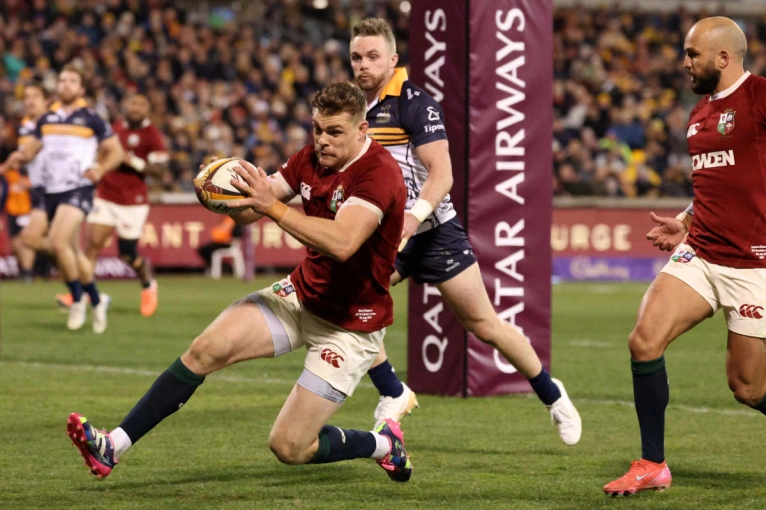
It’s worth remembering that this will be the only time most of these provincial players will get to face the Lions, and they’re always likely to play with a higher degree of passion and intensity as a result. These games often begin with a whirlwind of ferocity before the home side are eventually subdued and overrun by a physically superior force.
That happened to an extent against Western Force and the Queensland Reds, but less so against the Waratahs and the Brumbies. As the game limped towards its conclusion, many locals had their attention diverted to what was going on in the State of Origin decider in Sydney. Several punters were watching coverage of that on their mobiles alongside the live match unfolding in front of them. It’s a crowded sporting marketplace in Australia, and this Lions tour has yet to capture the public imagination.
The positives: Finn Russell remains remarkably composed, attacking the line with grace, and timing his passes – whether a pump pass to someone on his inside shoulder, or a floated bomb to his winger – to perfection. If this game was a final audition for the Test team, he’s secured his spot alongside official player of the match, Jamison Gibson-Park. Elsewhere, Garry Ringrose looked assured, showing some attacking elan to go with his defensive solidity, and Ollie Chessum did his prospects no harm with an industrious, try-scoring contribution.
There is an expectation among the hordes of travelling fans that the Lions will come good and win the Test series. Nights like Wednesday are a reminder that there is still a good bit of work to be done.
As the Lions left Canberra for Adelaide on Thursday, they did so knowing their winning run is intact. They’ve beaten their strongest provincial opposition (albeit shorn of most of their Wallabies) with relative ease. The Brumbies, despite their larrikin spirit, never looked like winning, and in victory the microscope naturally focuses more sharply on the nature of the Lions performance.
Lions tours, by their nature, are difficult: the itinerant lifestyle, the need to meld four nations together and to persuade more than 30 players to adopt a game plan that may go against their natural instincts. There’s a reason why they almost always travel as underdogs. This is a rare trip in which they travel as favourites (three of the home nations are currently above Australia in the world rankings) and the pressure to win is commensurately heavier.
There is an expectation among the hordes of travelling fans that the Lions will come good and win the Test series. Nights like Wednesday are a reminder that there is still a good bit of work to be done.
